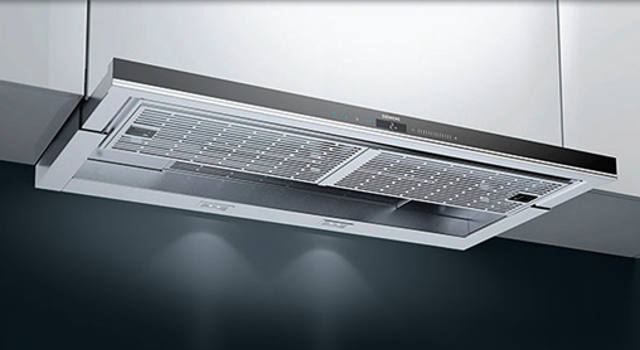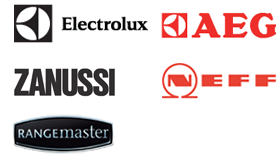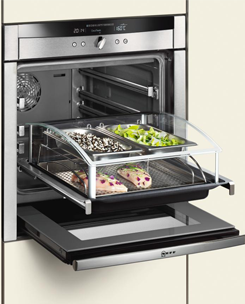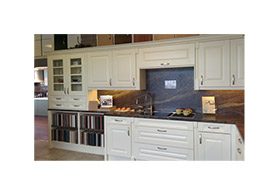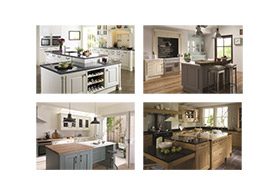Cooker Hoods Buyers Guide
Whether you’re designing a small apartment kitchen or a large family home kitchen/diner, it’s easy to forget about the practical things that can make all the difference. Ventilation is one such issue. A good cooker hood is essential to remove smells and steam from cooking, ensuring that your home doesn’t feel like a Turkish bath or smell of fish pie!
Seriously, the importance of ventilation in your kitchen cannot be overstated. A cooker hood can help to keep everything fresher and more hygienic. Luckily, there are many different models available that can be incorporated into your chosen design scheme or used as a kitchen feature.
At Price Kitchens, we know a thing or two about manufacturing kitchens that are both stylish and practical. We’ve put together a useful guide to help you choose the perfect cooker hood for your kitchen.
Extraction or Recirculation?
Essentially, cooker hoods come in 2 types – those that filter and extract the air from the room and duct it outside, and those that clean the air and recirculate it. Whichever method you choose, it is the job of the cooker hood to remove cooking odours and hot air from the kitchen, and the extraction rate determines how quickly this is done. Your cooker hood should be able to change the air in your kitchen at the rate of 12 times per hour. Obviously, the bigger the kitchen space, the higher the extraction rate will need to be.
Extractor Hoods
Extractor fans are generally considered the most effective way to clear your kitchen of smells, steam and smoke, simply because the airborne contaminants are sent outside. The way they’re designed is pretty straightforward and requires less maintenance. What’s more, without a filter to restrict the air movement, extractor hoods are often more powerful.
On the downside, installation will require an outside wall for the cooker hood, or at least the ventilation hose, to be connected to. This restricts where the extractor hood can be positioned. Depending on the layout and design of your kitchen, a ducted hood may not work at all.
Recirculating Hoods
If there is no way to vent your cooker externally, a recirculating hood may be the answer. These take the air from the kitchen and remove odours and smoke with the help of a charcoal filter, before releasing the clean air back into the kitchen. There’s also a separate grease filter to help remove oil and dirt droplets from the air. This is usually made of metal and must be periodically cleaned (many are dishwasher proof). Typically smaller in size than their extracting counterparts, a big advantage of recirculating hoods is that they can be installed anywhere in your kitchen.
The disadvantage of having a recirculating hood is that you need to replace the charcoal filter on a regular basis (at least once a year) for the filtering process to remain effective. Also, while odours are removed completely, the same cannot be said for heat and moisture, meaning some of it will be released back into the kitchen. Finally, recirculating hoods tend to be less powerful than extractor hoods, since the air has to be passed through a filter.
Types of Cooker Hood
Kitchen hoods come in a wide variety of styles, shapes and sizes. At Price Kitchens, we have a large selection of models for you to choose from to complement any type of kitchen design, from classic Shaker Kitchens to contemporary high gloss schemes. Here are some of the most popular options:
Integrated Hood
Also known as canopy hoods, built-in or built-under cooker hoods, these models are installed within or underneath a kitchen wall unit, concealed behind a panel or pull out door.
Chimney Hood
A favourite wall mounted design, this cooker hood has a long ‘chimney’ that comes down from the ceiling. If a chimney shape does not appeal, other wall mounted designs are available.
Island Hood
Specifically designed for kitchen islands, these freely suspended models can be expensive. Available in an exciting choice of designs, an island hood can make a real statement.
Ceiling Hood
Built into the kitchen ceiling, often at some distance from the hob, these hoods need a higher extraction rate and require ducting out, while operation by remote control is essential.
Pendant Hood
Resembling an eye catching, contemporary light fitting, this type of hood can be fitted above an island or close to a wall. Creating great impact in the kitchen, most pendant hoods are for recirculation only.
Downdraft Hood
The latest in kitchen tech, downdraft hoods are hidden within the worktop behind the hob, either close to a wall or on an island. Push the button and the hood rises up ready for use.
Cooking smells, steam and other airborne contamination is a constant issue when you’re preparing food or cooking at home. Choosing the right cooker hood for your kitchen means there’s one less thing to worry about, leaving you to concentrate on the things that really matter.
For more information on buying the best cooker hood for your needs, or any other kitchen advice, the friendly team at Price Kitchens is always happy to help. Call us on 020 8686 9006 or pop into our Croydon showroom for a chat and a look around.
